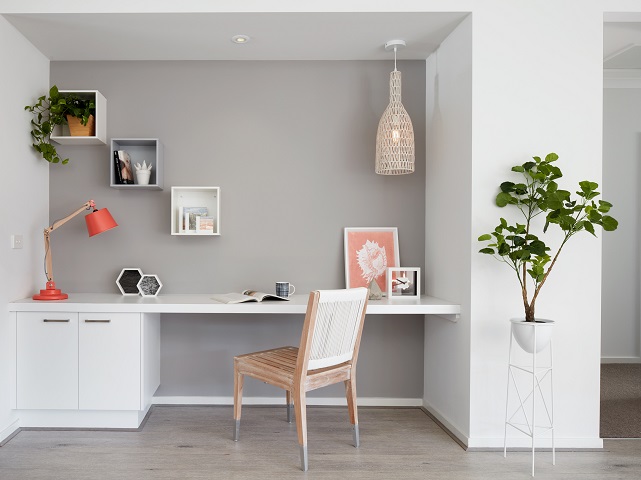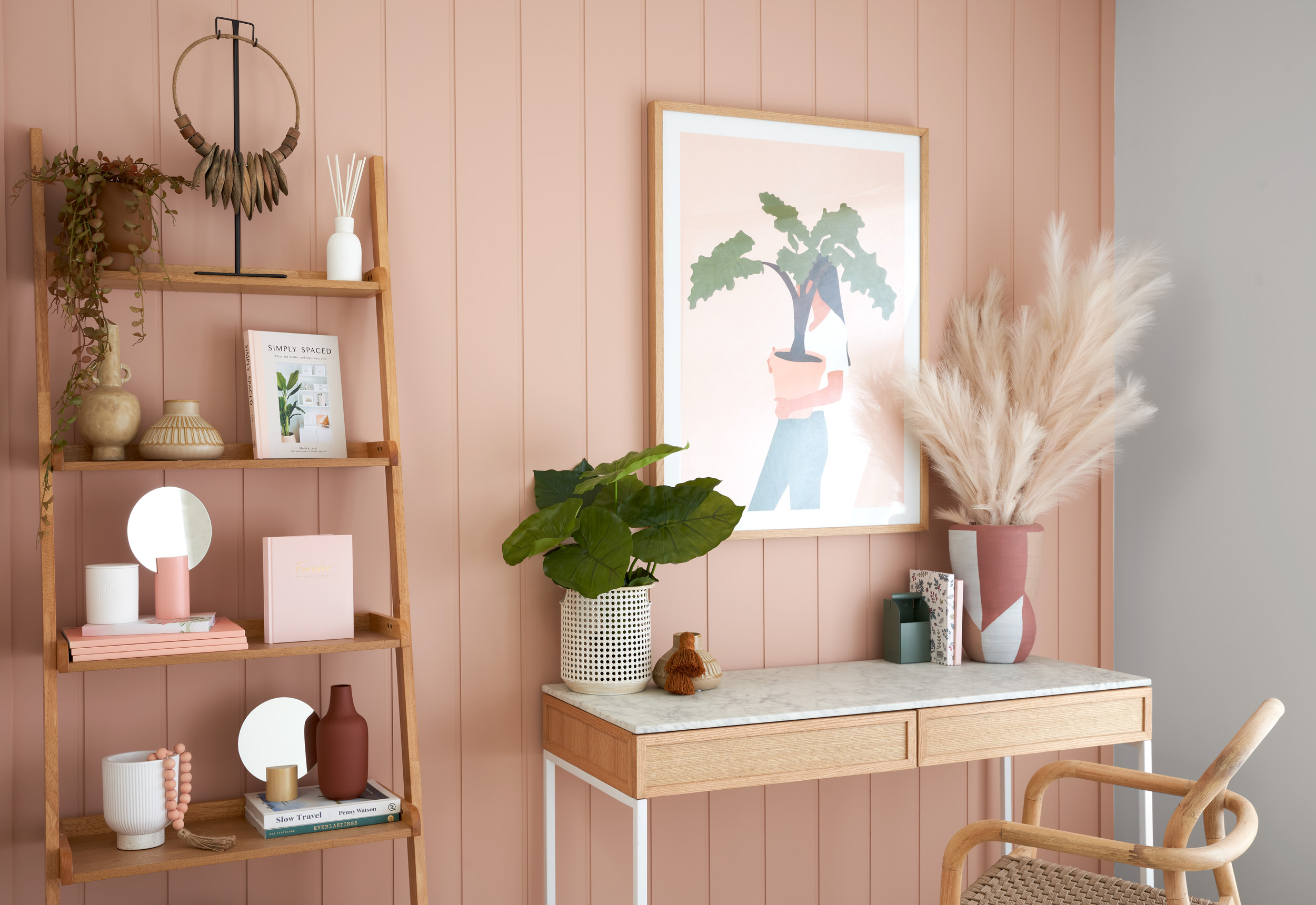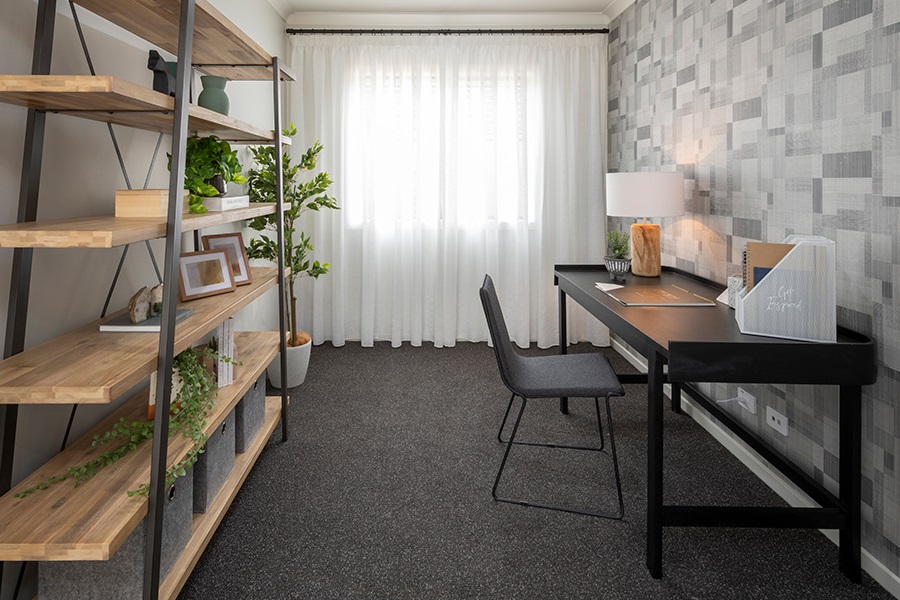Sophie Pickett-Heaps, Co-Head of Design at Stockland, shares three tips on how you can create the perfect workspace at home.
Now that work habits have changed and employees are continuing working from home for at least some of the week, houses need to serve a dual purpose. Sophie Pickett-Heaps, Co-Head of Design at Stockland, shares three tips on how you can create the perfect workspace at home that not only meets your needs during working hours, but also ensures you can get space from work when it’s time to relax at home.
Tip 1: Make sure you're comfortable
This is essential. There’s no point having a desk setup that looks amazing but leaves you struggling to move at the end of the day. To ensure your home office setup is as comfortable as it is functional, Sophie recommends:
- Getting the ergonomics right – get a good, supportive, adjustable office chair and a sturdy desk at standard office desk height. To avoid hunching over, you should be looking at a screen that is at eye level, so you’ll also need to consider your computer setup. If necessary and possible, place your computer monitor (and/or laptop) on a stand so it’s at the correct height for you
- Thinking about the lighting – good (ideally natural light) with minimum glare is perfect
- Getting fresh air – large offices rely on air conditioning, but nothing beats being able to open a window and enjoying the feel of fresh air while you’re working. Arranging a home-office desk setup near a window lets you access one of the natural perks of working from home
- Thinking about the practical essentials – your home office setup has to be practical. You need to consider things like the position of power points and wi-fi access
- Styling your space – a comfortable space is one you can call your own. Designing your home office is one of the best ways of feeling comfortable in it. You don’t have to look far for inspiration. Our Dreamcatcher design tool is just a click away

Regent 22 by Homebuyers Centre
Tip 2: Be inventive
If you aren’t able to dedicate a room as a home office, you’ll need to look at other areas where you could create a study nook or put your work from home desk. Sophie says transition areas like landings and hallways can be perfect for this purpose, as they often have sections where you can comfortably tuck yourself away without disrupting the overall flow of the home.
Onyx 21 by Homebuyers Centre
Tip 3: Think multi-functionally
By considering multiple uses for a single space, Sophie suggests most homes can meet both living and working needs. It all comes down to making spaces work harder and could involve:
- Including a day/night function – try positioning your study nook or home-office workspace in an area you can close off (by a partition, for example) when you ‘leave work’ at the end of the day. It’s a great way to maintain that important work-life balance
- Dividing rooms in two – again by using a partition or sliding door, you can reconfigure a living room or bedroom to give it two distinct purposes: including as a home office
- Doing more with your garage – it doesn’t just have to be used for the car. Garages are great spaces to use as a home office or even something like a home gym
Chatfield by Homebuyers Centre
Stockland builder partners offer a wide range of floorplans and designs to ensure your dream home provides the perfect dual-purpose balance of work and lifestyle. To help start the process, consider whether you would like (or need) a single or double-storey home, and the minimum number of bedrooms you need. Then you can decide how to best factor in a home office – and any lifestyle-focused areas like home theatres.
Your builder will be invaluable to you. Here are some ideas to discuss with them:
- Work out whether you need to add or remove rooms to suit the size of your family – maybe single rooms instead of the kids sharing one?
- Ensure an outdoor living area is not only suitable for a weekend or evening barbecue, but also lets you break up your working day by taking a meeting outside. That means thinking about plenty of shade to eliminate any laptop-screen glare.
- Discuss storage options so your home doesn’t become cluttered with items that should be locked up – try beds with storage compartments, installing shelves and extra bathroom storage. Think carefully about the size and layout of any home office.
What do you want to do next?
Keep going with finding my ideal type of home.


